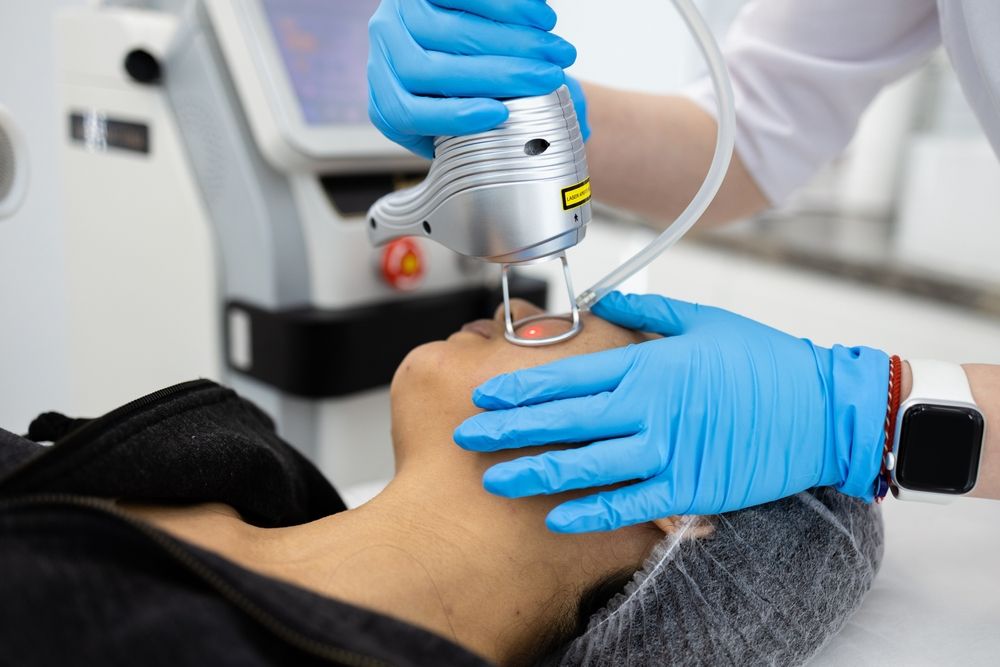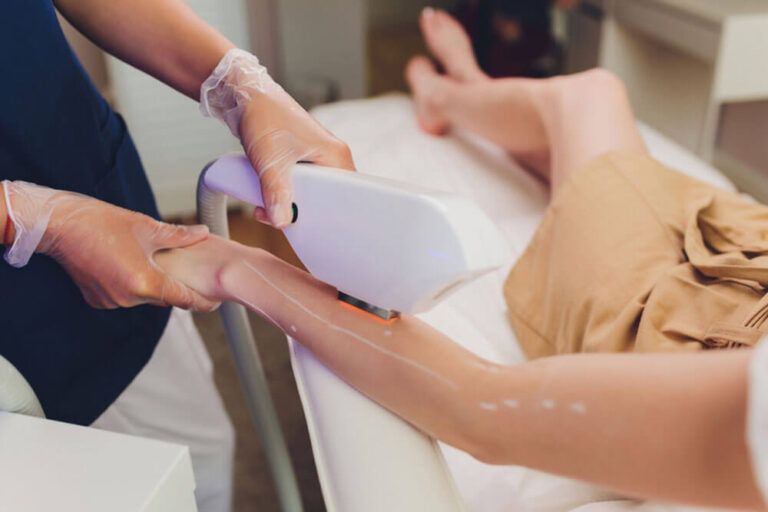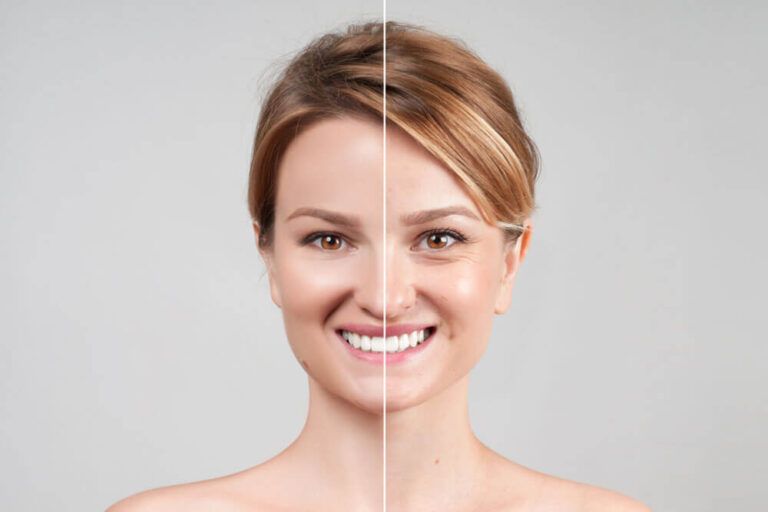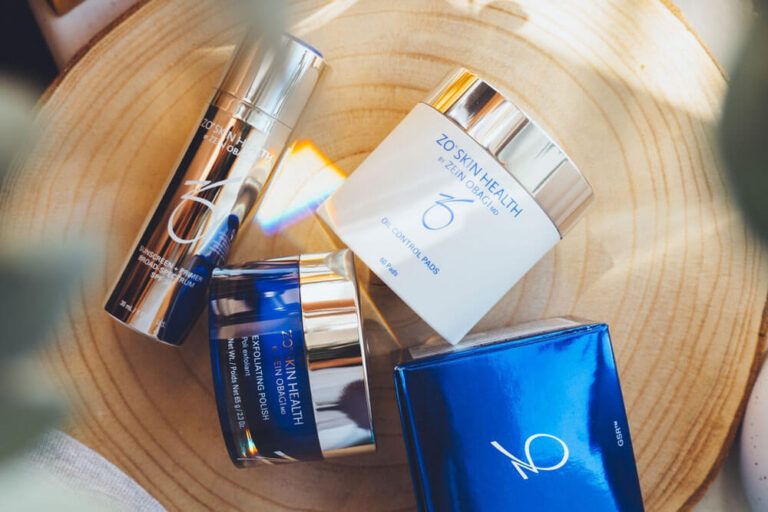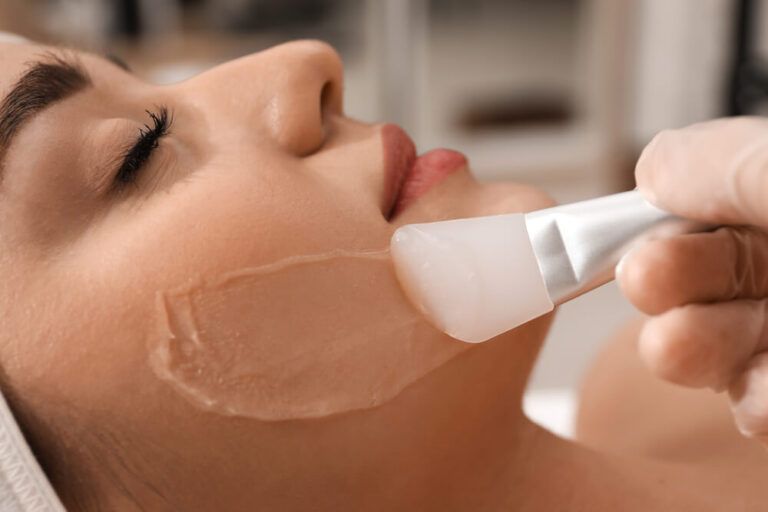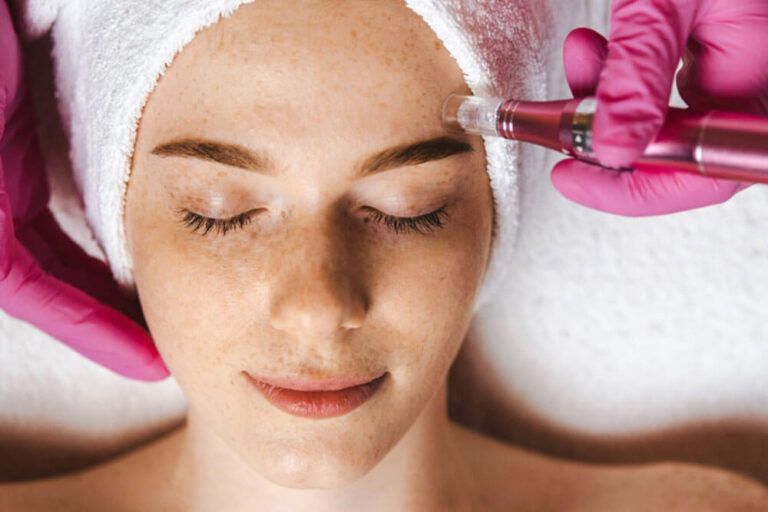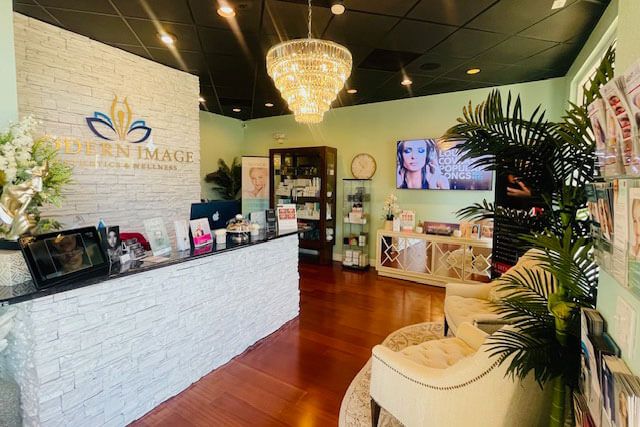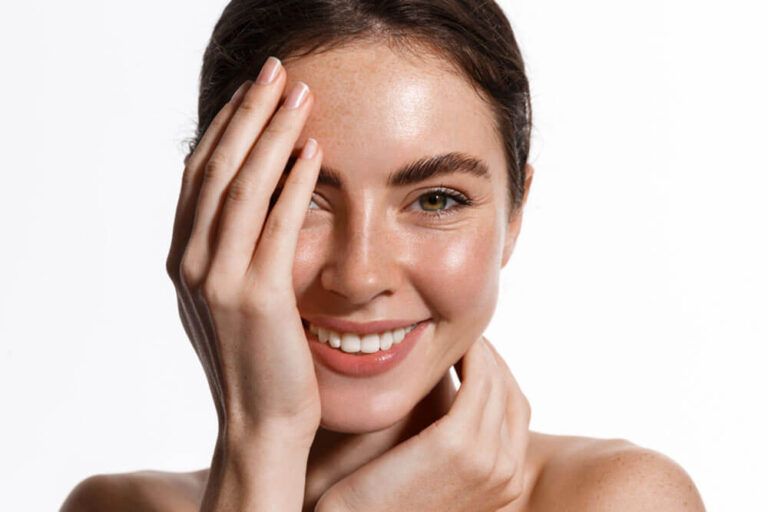Laser skin resurfacing is an advanced cosmetic treatment that effectively addresses fine lines, wrinkles, sun damage, and acne scars. By removing damaged layers of skin and stimulating collagen production, this procedure enhances skin texture, tone, and overall appearance. Whether you are looking to refresh your complexion or reduce visible signs of aging, laser skin resurfacing offers a powerful solution for achieving smoother, healthier skin.
In This Blog:
- What is Laser Skin Resurfacing?
- The Benefits of Laser Skin Resurfacing
- What to Expect During the Procedure
- Who is a Good Candidate for Laser Skin Resurfacing?
- How Laser Skin Resurfacing Compares to Other Treatments
- Choosing the Right Medispa for Your Treatment
What is Laser Skin Resurfacing?
Laser skin resurfacing is a non-invasive or minimally invasive treatment that uses concentrated light energy to improve skin quality. The procedure removes the outer layer of damaged skin while encouraging the growth of new, healthier tissue underneath.
There are two primary types of laser treatments:
- Ablative Lasers – These lasers remove the top layer of skin, promoting significant collagen regeneration. CO₂ and Erbium lasers are commonly used for this type of treatment.
- Non-Ablative Lasers – These lasers heat the deeper layers of the skin without removing the surface layer. They require less downtime but may require multiple sessions for optimal results.
Laser skin resurfacing is commonly used to treat:
- Fine lines and wrinkles
- Acne scars and other blemishes
- Sun damage and hyperpigmentation
- Uneven skin texture and enlarged pores
The Benefits of Laser Skin Resurfacing
Laser skin resurfacing is one of the most effective treatments for achieving smoother, younger-looking skin. By removing damaged outer layers and stimulating collagen production, it delivers long-term improvements in skin texture, tone, and overall health. Here are some of the key benefits of this treatment:
Reduces Fine Lines and Wrinkles
As skin ages, collagen and elastin levels decrease, leading to the formation of fine lines and wrinkles. Laser resurfacing stimulates collagen production, helping to smooth out wrinkles and restore skin’s elasticity, making it a popular choice for those looking to reduce visible signs of aging.
Improves Skin Texture and Tone
Uneven skin texture, rough patches, and enlarged pores can make skin look dull and aged. Laser resurfacing removes damaged skin cells, promoting the growth of fresh, healthy skin. This leads to a smoother, more refined complexion with a more even skin tone.
Reduces the Appearance of Scars
Acne scars, surgical scars, and other skin imperfections can be challenging to treat with topical products alone. Laser resurfacing breaks down scar tissue and encourages the production of new collagen, softening scars and blending them more seamlessly with surrounding skin.
Minimizes Sun Damage and Hyperpigmentation
Sun exposure can cause dark spots, age spots, and an overall uneven complexion. Laser resurfacing targets areas of excess pigmentation, helping to reduce discoloration and restore a more uniform skin tone. It is particularly effective in treating sun-damaged skin.
Tightens the Skin and Boosts Collagen Production
One of the long-term benefits of laser skin resurfacing is its ability to stimulate collagen production. As collagen increases, skin becomes firmer and more resilient, leading to a naturally lifted and youthful appearance over time.
Provides Long-Lasting Results
Unlike many skincare treatments that require frequent maintenance, the results of laser resurfacing are long-lasting. While the skin will continue to age, the improvements in texture, tone, and elasticity can last for years with proper skincare and sun protection.
Customizable for Different Skin Concerns
Laser resurfacing can be tailored to address specific skin concerns, whether you need a more aggressive treatment for deep wrinkles and scars or a gentler approach for mild pigmentation and textural issues. Different types of lasers, including ablative and non-ablative options, allow for customized treatment plans to suit individual skin types and goals.
What to Expect During the Procedure
Before Treatment
A consultation with a qualified skincare professional is essential to determine the most suitable laser for your skin type and concerns. Your provider may recommend pre-treatment skincare products to prepare the skin for optimal results.
The Treatment Process
- Skin Preparation – The skin is cleansed, and a numbing cream or local anesthesia is applied to minimize discomfort.
- Laser Application – The laser is directed at the treatment area in controlled pulses, targeting the skin’s deeper layers to promote collagen production. The process typically lasts between 30 minutes and two hours, depending on the size of the treatment area.
- Cooling and Post-Treatment Care – A cooling mask or soothing agent may be applied immediately after the procedure to reduce irritation and inflammation.
Pain and Sensation During Treatment
Most patients experience mild to moderate discomfort, often described as a warm or tingling sensation. Ablative lasers may cause more noticeable discomfort, while non-ablative treatments are generally well-tolerated with minimal pain.
Post-Treatment Care and Recovery
Proper aftercare is essential for achieving the best results and minimizing potential side effects. Some key recovery tips include:
- Expect Redness, Swelling, and Peeling – The skin may appear red and swollen immediately after treatment, with peeling occurring within the first week.
- Keep the Skin Moisturized – Using a gentle, hydrating moisturizer helps support the healing process.
- Avoid Sun Exposure – Sun protection is critical, as the skin is more sensitive to UV rays after treatment. Wearing SPF 30 or higher is recommended.
- Follow Provider Recommendations – Using recommended skincare products and avoiding harsh chemicals will promote optimal healing.
Results become more noticeable within one to two weeks, with continued improvements as collagen production increases.
Who is a Good Candidate for Laser Skin Resurfacing?
Individuals who may benefit from laser resurfacing include those with:
- Fine lines, wrinkles, and signs of aging
- Acne scars or other textural irregularities
- Sun damage or hyperpigmentation
- Overall skin dullness or loss of elasticity
However, laser resurfacing may not be suitable for individuals who:
- Have darker skin tones that are prone to pigmentation changes
- Have active acne breakouts or skin infections
- Are pregnant or nursing
- Have used Accutane within the last six months
A consultation with a skincare professional will help determine if laser resurfacing is the right choice.
How Laser Skin Resurfacing Compares to Other Treatments
When considering skin rejuvenation treatments, it is essential to understand how laser skin resurfacing compares to other available options. While all treatments aim to improve skin texture and appearance, their methods, intensity, and results vary.
Laser Skin Resurfacing vs. Chemical Peels
Chemical peels use acids to exfoliate the skin, removing dead cells and stimulating new skin growth. The intensity of a chemical peel ranges from mild to deep, depending on the type of acid used.
- Best for: Mild to moderate skin imperfections, including uneven tone, dullness, and fine lines.
- Downtime: Light peels require little recovery time, while deep peels can take up to two weeks.
- How it compares: Laser skin resurfacing provides more precise control over the treatment area and can penetrate deeper layers of skin for more dramatic results, making it more effective for deeper wrinkles, significant sun damage, and acne scars.
Laser Skin Resurfacing vs. Microneedling
Microneedling creates tiny micro-injuries in the skin using fine needles, triggering the body’s natural healing process to boost collagen and elastin production.
- Best for: Mild textural concerns, fine lines, enlarged pores, and general skin rejuvenation.
- Downtime: Minimal; mild redness and sensitivity for a few days.
- How it compares: While microneedling is an effective collagen stimulator, it does not resurface the skin as aggressively as laser treatments. Laser resurfacing is better suited for deeper wrinkles, severe acne scars, and extensive pigmentation issues.
Laser Skin Resurfacing vs. Intense Pulsed Light (IPL) Therapy
IPL therapy uses broad-spectrum light to target pigmentation, redness, and vascular concerns. It is commonly used to treat sun spots, rosacea, and broken capillaries.
- Best for: Uneven skin tone, sun damage, redness, and vascular lesions.
- Downtime: Minimal; mild redness or swelling for a few days.
- How it compares: While IPL is effective for treating discoloration, it does not improve skin texture or stimulate collagen to the same extent as laser resurfacing. Laser treatments can address both pigmentation and textural concerns more comprehensively.
Laser Skin Resurfacing vs. HydraFacial
A HydraFacial is a non-invasive facial treatment that combines cleansing, exfoliation, and hydration using a specialized device. It is known for delivering instant glow and hydration.
- Best for: Mild skin dullness, dehydration, and clogged pores.
- Downtime: None; skin appears refreshed immediately after the procedure.
- How it compares: While HydraFacial is a great maintenance treatment for overall skin health, it does not address deeper concerns like wrinkles, acne scars, or severe sun damage. Laser skin resurfacing offers a more intensive, long-lasting transformation.
Laser Skin Resurfacing vs. Radiofrequency (RF) Microneedling
RF microneedling combines traditional microneedling with radiofrequency energy to tighten skin and stimulate collagen at a deeper level.
- Best for: Mild to moderate skin laxity, fine lines, and enlarged pores.
- Downtime: A few days of redness and sensitivity.
- How it compares: RF microneedling focuses on skin tightening, whereas laser resurfacing is more effective for textural improvement, deep wrinkles, and pigmentation correction. Some patients benefit from combining both treatments for enhanced results.
Which Treatment is Right for You?
Choosing the best skin rejuvenation treatment depends on your specific concerns, skin type, and desired results. Laser skin resurfacing is an excellent choice for individuals seeking significant improvement in skin texture, wrinkles, and pigmentation. However, for those with milder concerns or who prefer minimal downtime, alternatives like chemical peels, IPL, or microneedling may be more suitable.
A consultation with a skincare professional can help determine which treatment aligns best with your goals and skin condition.
Choosing the Right Medispa for Your Treatment
Selecting the right medispa is essential for safe and effective treatment. Consider the following when choosing a provider:
- Experience and Credentials – Look for a medispa with licensed professionals who specialize in laser skin resurfacing.
- Advanced Technology – Ensure the medispa uses up-to-date laser equipment tailored to different skin types.
- Patient Reviews and Testimonials – Reading reviews and viewing before-and-after photos can provide insight into the quality of care.
- Consultation and Personalized Treatment Plans – A thorough consultation helps determine the best approach for individual skin concerns.
Conclusion
Laser skin resurfacing is an effective solution for individuals looking to improve skin texture, tone, and overall health. Whether addressing fine lines, acne scars, or sun damage, this treatment offers long-term benefits by stimulating collagen and promoting skin renewal.
For those considering laser resurfacing, scheduling a consultation with a medispa professional is the first step toward achieving a refreshed and rejuvenated complexion.


